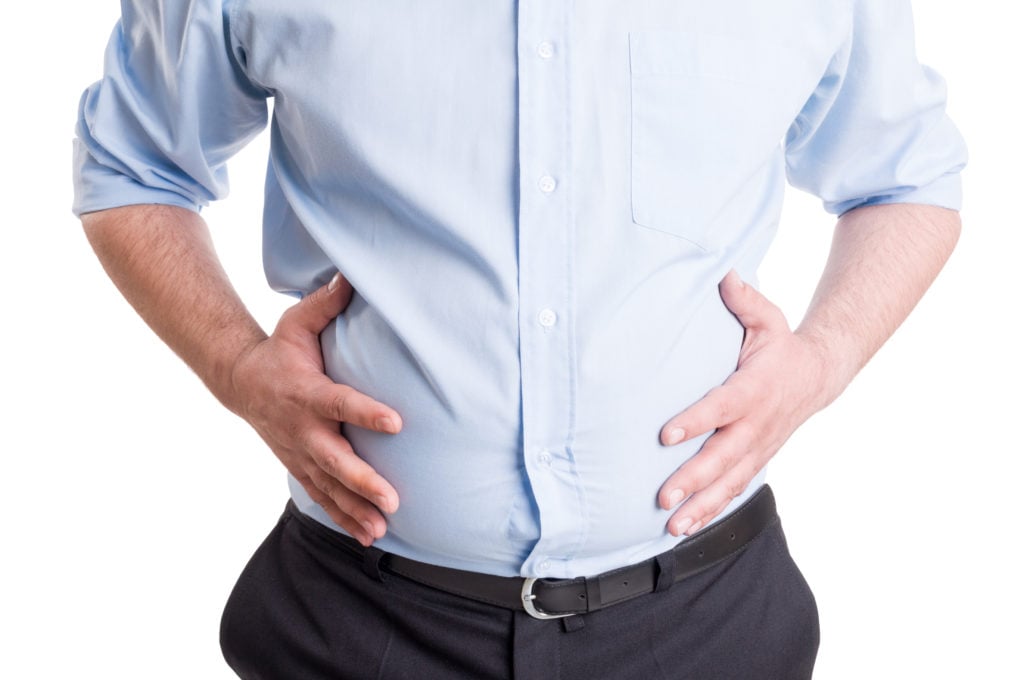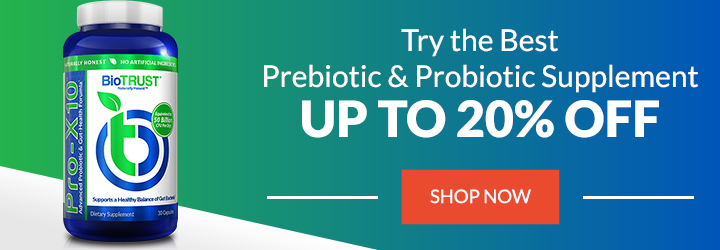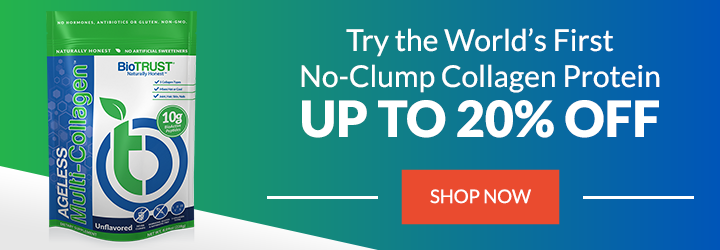Gut-Rebuilding Program: How to Heal Your Gut (10 Steps)

Bloating. Mood issues. Unattractive skin. Poor digestion. Brain fog. Allergies. Headaches. Difficulty with weight management. Hormonal imbalances. Those are just a handful of the long (and growing) list of health problems tied to poor gut health and gut microflora imbalances.
Considering the seemingly boundless reach of gut health on overall human health and the prevalence of poor gut health, it’s no surprise that you’re here. And I’m glad you are. If you or someone you care about is desperate to discover how to heal your gut, the detailed gut-rebuilding program below provides step-by-step directions designed to promote a healthier gut and a healthier YOU.
Health Begins in the Gut
Over the last several years, it’s become increasingly apparent that the gut is much more than your stomach or an instinct. And it’s much more complex than the organ that digests food and absorbs nutrients. While there’s still a lot to learn, it’s a bit embarrassing that our view of the digestive tract has been so myopic for so long. That’s especially true given that Hippocrates, the Father of Modern Medicine, was dropping not-so-subtle hints about the role the gut plays in overall health thousands of years ago:
“All disease begins in the gut.” – Hippocrates
Pretty straightforward, no?
Chances are, if you’ve got a health issue or concern, taking steps to ensure you’ve got your gut in order would be very wise. Of course, poor gut health is intricately tied to digestive-related complaints, such as:
- Belly bloating and distension
- Excess gas and flatulence
- Constipation, diarrhea, or both
- Abdominal pain and cramping
What’s crazy and often underappreciated, however, is the ripple effect that poor gut health can have on the rest of the body and its systems. In fact, it’s becoming increasingly clear that poor gut health is intricately tied to a laundry list of health concerns, including:
- Auto-immune flare-ups
- Skin issues
- Joint issues
- Thyroid issues
- Respiratory issues (e.g., mucus, sniffles, sinusitis)
- Headaches
- Mood issues (e.g., feeling blue, moody, and/or stressed)
- Brain fog
- Energy issues
- Sleep issues
- Heart-related issues
- Weight issues
What is Gut Dysbiosis?
There’s more, and the list seems to be growing regularly. While gut health is a complicated, nuanced topic, and we still have much to learn, it’s becoming increasingly apparent that one of the most pressing concerns comes down to an imbalance of microbes in the gut, also known as gut dysbiosis.
You see, we all have “good” and “bad” microbes (e.g., bacteria, yeasts) that reside in our digestive tracts—roughly 100 trillion of them, actually. And maintaining a healthy balance is critical. Unfortunately, our gut microbiota (the community of microbes that make us us) can be challenged by everyday encounters, like:
- Stress
- Poor diet
- Antibiotics
- Over-the-counter medications
- Traveling
- Aging
- Environmental toxins
- Smoking
- Alcohol
- And more
How to Heal Your Gut (10 Steps)
In other words, an imbalance of gut microbes and/or an overgrowth of bacteria (e.g., small intestinal bacteria overgrowth) can be tremendously problematic and can be the root cause of various health concerns, which is no small wonder considering that gut microbes have been deemed “microscopic puppet masters” by researchers due to their evidently boundless control over our body systems and behaviors.
Or, as my good friend Shawn Wells so boldly and vividly stated, “They control us. We are just giant flesh bags getting operated by these microscopic passengers.”
With that in mind, let’s get into the gut-rebuilding program and 10 pertinent steps on how to heal your gut.
Step 1: Addition by Elimination
If you’re like most people, what you eat is going to have the greatest key on how to heal your gut. In other words, the foods you do—and don’t—eat tend to carry the most weight in the gut-healing process.
And when it comes to healing your gut with your diet, the first part of the repair and rebuilding process typically involves wiping the slate clean. In other words, we typically need to take a dietary approach that is designed to help soothe the gut, remove foods that might trigger inflammation, and prune back the gut microbiota (as bacterial overgrowth and/or imbalances can be problematic).
In simple terms, this typically means following some sort of elimination-style diet that removes the most commonly offensive foods. While there are numerous options, some examples include:
- Modified fasts (e.g., liquid-only diet)
- Elemental and semi-elemental diets
- Whole30
- Autoimmune Paleo
- Low-FODMAP diet
- Low-Histamine diet
- Low-Lectin diet
While these range in the severity of restriction, these approaches share common ground. For example, at a minimum, an elimination-style diet is going to remove the following “usual suspects”:
- Gluten (e.g., wheat, rye, barley)
- Dairy (e.g., milk, butter, cheese, yogurt)
- Soy
- Corn
- Eggs
- Peanuts
- Added/refined sugar
- Processed foods (e.g., foods made with refined flours)
- Alcohol
- Caffeine
Many elimination-style diets also suggest avoiding all grains, legumes, nightshades (e.g., tomatoes, eggplants, potatoes, and peppers), and a variety of fruits and vegetables. Generally speaking, the more extreme degree of elimination is often suggested for more severe, stubborn, and/or pervasive symptoms. Some additional common themes of elimination-style diets include:
- Eating a rainbow of (non-offensive) fruits and vegetables, which help increase consumption of micronutrients, phytonutrients, and fiber.
- Removing added sugars and refined grains, like those found in countless processed, packaged foods.
- Removing artificial sweeteners.
- Improving the quality of fat intake by eliminating refined and hydrogenated oils.
- Choosing better animal proteins, such as organic, grass-fed, free-range, and/or sustainably-raised meat, dairy, poultry, eggs, and fish.
- Avoiding processed foods, and instead, focusing on whole, minimally processed foods.
In fact, for quite a few people, this may be an ideal time to follow a low-carbohydrate diet since doing so can have a substantial “pruning” effect on the gut microbiome, which may be highly beneficial in certain instances, such as overgrowth and/or imbalanced gut bacteria.
The goal of an elimination diet is not to feel like you’re stuck in a food prison and can never eat some—or any—of these foods again. Rather, the object is to calm the internal storm, create greater awareness of how foods affect you, and develop a deeper understanding that certain food choices may carry undesired consequences (plus, it will help heal your gut).
According to leading functional medicine physician Dr. Susan Blum, author of Healing Arthritis, “The goal of an elimination diet is to help you feel better while identifying which foods might be a problem for you, so you can create your own personalized food plan.”
Step 2: Be Careful with Fibers
There’s little question that dietary fibers are healthy and offer a wide array of potential health benefits. When it comes to repairing and healing your gut, however, we do have to be careful with fiber consumption.
Speaking generally, consuming enough fiber (25 – 40 grams per day) is foundational for digestive health and regularity. Many people who aren’t eating enough find that increasing fiber consumption improves digestion symptoms (e.g., bloating, constipation, digestive discomfort), general feelings of well-being (e.g., feeling less fat, more mentally alert, slim, happy, and more energetic while feeling less stressed, less tired, and having an easier time concentrating), and improved bowel function (e.g., ease of defecation).1–4
Be mindful, however, that ramping up your fiber intake too quickly can be problematic. In particular, some people seem to be quite sensitive to increases in insoluble fiber as well as highly fermentable, short-chain soluble fibers.2,5 Because fermentable fibers also offer tremendous upside (e.g., they help promote the growth of healthy gut bacteria and help control microbial populations), it’s worth experimenting to see how you respond to various food sources.
As is the recurring theme with how to heal your gut, pay attention to how your body responds to any changes you make. Along those lines, it’s best to implement changes systematically so you can identify what’s working—or not.
Step 3: When and How You Eat
When researching how to heal your gut, there’s no question a bulk of the dietary information you’re bound to come across homes in on what you eat. Little attention is given to how you eat. And even less respect is paid to when you eat. That’s unfortunate because the how and the when are tremendously important.
- Eat slowly, mindfully, and intentionally. Believe it or not, the first step in digestion begins before we even put food in our mouths. The sight, smell, and even the simple thought of food initiates what’s referred to as the cephalic phase of digestion. This phase signals the release of stomach acid and certain digestive enzymes. By slowing down and eating mindfully, you can set yourself up for more efficient digestion. For most people, this means not eating in the car, while working, in front of a screen, or while talking on the phone, for example. Rather, it means actually sitting down to eat, putting your utensil of choice down between bites, and maybe even actually having a meaningful conversation with someone—in person!
- Chew your food thoroughly. The mechanical process of digestion begins in the mouth when the food you eat is exposed to your saliva, which contains enzymes that break down carbohydrates (salivary amylase) and fats (lingual lipase). Chewing, which is also part of the cephalic phase, triggers the rest of the digestive process, helps the muscles of the digestive tract work properly, and signals the pancreas to release digestive enzymes.
- Gut clock. Most people have heard of circadian rhythms, which refer to the body’s 24-hour cycle of biological processes. Along these lines, most people recognize that circadian rhythms correlate with the natural light/dark and sleep/wake cycles. While that’s a good starting point, there’s sooo much more to the story. And while it’s beyond the scope of this article to take a deep dive into circadian biology, what you need to know is there are circadian “clocks” sprinkled everywhere in the body, including throughout the digestive tract.
Step 4: Know The Sleep-Gut Connection
The link between sleep and your gut is a two-way street. In other words, sleep can impact gut health, and vice versa. If you struggle to get a good night’s sleep, it’s quite possible an unhealthy gut may be an overlooked culprit. Meanwhile, if you have less-than-stellar sleep hygiene and don’t think the “rules” of sleep apply to you, chances are that mindset and pattern of behavior has quite literally busted your gut.
You see, recent research has revealed that adults with poor sleep quality also have less-than-ideal gut microbial compositions. Additionally, sleep disorders, disruptions, debt, and deprivation are all known to negatively impact the delicate balance of gut microbes.7 Of course, not getting quality rest or enough sleep can affect food choices and impair stress tolerance, both of which can negatively impact the gut as well.
While the relationship between the gut and sleep is complex, when you’re zeroed in on healing your gut, you need to do everything you can to ensure you’re consistently getting quality rest. And while you may not be able to influence every aspect of the sleeping equation, there are far more behaviors you can control than you might imagine. If you want to heal your gut, you can start by taking inventory of your sleep hygiene.
Step 5: Supplement Your Gut
It can be tempting to supplement with everything under the sun. While there are exceptions, the following is a solid front line of defense if you are looking to heal your gut.
1. Digestive Enzymes. When it comes to maldigestion—one of the biggest culprits when it comes to GI-related issues—a probable suspect is insufficient production of digestive enzymes, which are the keys that unlock foods’ potential. Along these lines, supplementing with digestive enzymes is just plain smart when it comes to healing the gut. Unless you have very specific needs, consider starting with a broad-spectrum enzyme supplement that promotes digestion of proteins, carbs, and fats. You may also consider using supplements that offer stomach acid and bile acid support as the body’s natural production of these two critical components often declines with age.
2. Probiotics. Second only to changing dietary habits, supplementing with probiotics is one of the most fundamental steps when it comes to healing your gut.8 After all, one of the primary functions of probiotics is to help support a healthy balance of gut bacteria. In fact, that is the most widely accepted core benefit of probiotics, according to a panel of esteemed researchers specializing in probiotics.9 Considering that an overgrowth and/or imbalance of gut microbes seems to be a recurring theme of an unhealthy gut, it makes perfect sense that supplementing with probiotics could help by altering the microbiota in a healthy way. Keep in mind that not all probiotics are the same. Different genus (e.g., Lactobacillus, Bifidobacterium, Bacillus, Saccharomyces), species, and strains may have drastically different effects on an individual basis.
3. Berberine. Frequently used to support glycemic control and insulin sensitivity—for which it is quite effective—berberine has a long history of use to combat digestive-related issues due to its antimicrobial and anti-inflammatory properties. Along those lines, berberine may help support gut barrier function, promote a healthy intestinal lining, improve gut motility, and reduce digestive discomfort.10
4. Curcumin. Because of its antioxidant, anti-inflammatory, and antimicrobial properties, curcumin is thought to be beneficial for digestive-related issues. Along those lines, curcumin preferentially accumulates in the intestines and colon, fortifying its promise in soothing digestive-related issues.11,12
5. Bone Broth. Got gut issues? Bone broth may be the answer. For starters, bone broth contains nutrients that support the intestinal lining, support a healthy gut microbiota, aid in the production of stomach acid and bile (which both play critical roles in digestion), improve gut motility, and more.14–16
While there’s a lot more to bone broth when it comes to nutrients, it is arguably the richest dietary source of collagen protein, which is an essential component of the digestive tract as it helps maintain the structure and integrity of the intestinal lining.
What’s more, bone broth is particularly rich in the amino acids glycine and glutamine, which are particularly nourishing for the cells of the digestive tract and immune system.
6. Polyphenols. The evidence is quite clear that diets higher in fruits and vegetables increase microbial diversity in the gut, which is generally considered a good thing when it comes to healing the gut.17 While there are surely multiple explanations as to why this may be the case, one of the most compelling is the polyphenols found in fruits and vegetables.
On one hand, polyphenols serve as powerful antioxidants, which can help promote a healthy inflammatory response. On the other hand, certain polyphenols have prebiotic activity. This means they help feed good gut bacteria and support a healthy microbial balance.
Because getting a copious amount and variety of polyphenols is ideal yet difficult, supplementing with a high-quality polyphenol supplement (e.g., a greens powder) tends to be a helpful asset in the gut-healing process.
Step 6: Control Stress
Have you ever noticed that when you’re stressed, hurried, or eating on the run, digestive-related issues seem to stockpile?
Stress isn’t inherently bad, but it can do a doozy on digestion, which probably isn’t too surprising given its seemingly limitless reach on all aspects of health. For starters, stress activates the “fight or flight” branch of the nervous system. This can directly inhibit the body’s ability to “rest and digest.”18
What’s more, we now know chronic stress can compromise the gut microbiota, contributing to dysbiosis and intestinal permeability.19 Focus on properly managing stress by:
- Setting boundaries (i.e., learning to say “NO”)
- Exercising (whatever you enjoy doing)
- Practicing yoga
- Taking a walk outdoors
- Meditating
- Deep breathing (see “Just Breathe” below)
Step 7: Talk It Out
Scientists have long noted a strong connection between the gut and the brain. Research has demonstrated that a history of trauma or abuse—dating as far back as young childhood—has been reported in up to half of adults with regular digestive complaints, including bloating, at a prevalence twice that of folks without recurring digestion issue.
In other words, trauma, abuse, and mental and emotional issues can be strongly tied to bloating and other digestive-related complaints.
Along these lines, psychological therapies can profoundly and noticeably reduce the severity of GI symptoms, including bloating.20,21 The take-home point is that healing your gut may very well involve some mental and emotional work, which is best facilitated alongside a qualified mental healthcare practitioner. And although it may seem a little woo-woo to some, I have no doubt spiritual fitness plays a tremendous role in the gut-healing process as well.
Step 8: Get Moving (But Not Too Much)
When it comes to exercise, I often wonder, what can’t it do to promote a healthy mind and body? Not surprisingly, research suggests exercise can have powerful gut-healing properties. For example, recent studies have shown that exercise can:22
- Enhance the number of beneficial microbial species
- Enrich the microbial diversity
- Improve the development of friendly bacteria
All of these effects, of course, are beneficial to the host (that’s you). However, like many things in life, it is possible to have too much of a good thing. For instance, exercise-related GI issues (e.g., diarrhea, cramping, nausea, abdominal pain) are quite common. And there’s evidence that exercise may increase intestinal permeability and cause small intestinal damage. The extent of these alterations may be dictated by increasing the intensity and duration of exercise.23,24
However, it is important to note that these structural and functional GI characteristics seem to be highly individualistic. In other words, not everyone is impacted by exercise identically.
Step 9: Shape Your Environment
Often overlooked, your physical and social surroundings can have tremendous effects on the pace and extent at which you heal your gut. For example, if you want to change your diet, you need to make sure you’re surrounding yourself with healthy food options while removing those you are actively avoiding. You can’t eat them if they aren’t there, and that goes both ways.
Your physical environment also means limiting your exposure to various toxins. Some obvious examples that come to mind are pesticides, herbicides, polychlorinated biphenyls (PCBs found in plastics), endocrine-disrupting chemicals (e.g., bisphenol A, phthalates—again, found in plastics), and even a variety of common food additives (e.g., emulsifiers), which may negatively alter the composition of the gut.25,26
When it comes to your social environment, who are you surrounding yourself with? According to motivational speaker Jim Rohn (and countless successful men and women since), “You are the average of the five people you spend the most time with.” Heck, even the Bible warns us about who we spend our time with: “A man of many companions may come to ruin, but there is a friend who sticks closer than a brother.” (Proverbs 18:24)
Do you actively surround yourself with people who support and encourage you while also holding you accountable and pushing you to be your best? Or, do you find the people you spend the most time with are energy vampires, demand little of themselves, offer one excuse after another, are brimming with negativity, and seem to thrive on bringing others down to their level?
If you want to make a change, you need to ensure you’re part of a supportive community. Often, that means changing your social landscape. Maybe it means hiring a coach/mentor. Maybe it means actively pursuing like-minded folks with similar goals, passions, and priorities. Maybe it means injecting yourself into a completely new environment.
After all, you know what they say about doing the same thing over and over again yet expecting different results. As John C. Maxwell has said, “When you want something you have never had, you have to do something you have never done.”
Simply put, if you want to heal your gut, you’re going to have to make some changes.
Step 10: Fixing Your Mindset is Key
The gut-healing path can vary considerably from one person to another. There’s no one-size-fits-all approach. And there’s no definitive timeline that applies to everyone. For example, four weeks of a moderate elimination-style diet, some probiotics and digestive enzymes, and better sleep and stress management may be all one person needs to get 80 – 90% healed. Another person, meanwhile, may need to segue from an extreme elimination diet to a more moderate one, carry a tacklebox full of supplements, and require intensive psychotherapy before reaching a nirvana state of gut healing.
Like most worthwhile journeys in life, the process to heal your gut requires patience, mindfulness, diligence, persistence, focus, support, and faith. Like John C. Maxwell talks about in his speeches on going from “ordinary to extraordinary,” the path to healing your gut is going to take:
- A little extra effort
- A little extra time
- A little extra help
- A little extra change
- A little extra thinking
- A little extra attitude
- A little extra planning
But then again, doesn’t anything worthwhile?
If the gut-rebuilding program above isn’t enough to help you heal your gut, then I highly recommend you check out Dr. Michael Ruscio’s exceptional book Healthy Gut, Healthy You, which delves into this topic in even greater depth with even deeper direction.
If you experiment with the gut-rebuilding program outlined above, I’d love to hear your feedback and questions. There’s nothing I want more than for you to heal your gut and get back to living the life of your dreams!









